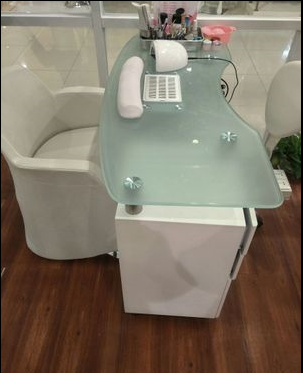Manganese is one of the trace elements necessary for crops. The normal manganese content of plants is generally 20-100 mg/kg, which varies depending on the crop type and growth conditions. The lack of manganese can cause the growth of plants to be hindered, or even stop growing. This is because the relationship between manganese and the photosynthesis of plants is extremely close, and it affects the metabolism of auxin, and there are many crops that respond well to manganese fertilizers. The symptoms of Mn deficiency in the general crops are the chlorotic chlorosis among the new leaves. In severe cases, the chlorotic parts are yellow-brown or auburn spots, which gradually increase and spread over the entire leaf. Sometimes the leaves wrinkle, curl or even wither. In early wheat-deficient wheat, gray-white infiltrated spots appear in the absence of manganese, and the new leaf leaves chlorosis and chlorosis. The veins remain green, and then the yellowing part gradually becomes brown and necrotic, forming linear brown spots of varying lengths parallel to the veins. Thin, soft and wilting, namely brown chlorosis. Dicotyledonous plants such as cotton and rape are deficient in manganese, and the young leaves are first chlorotic. The veins appear grayish or grayish red and show a reticular vein pattern. Occasionally, there are lavender or light brown spots on the leaves. Beans, such as beans, beans, and peas, lack manganese, and often appear small and cracked, deformed, and brown spots, wet spot disease. After seedlings emerged, the cotyledon center tissue and young stems and young roots became brown. Beet Mn deficiency, the initial stage of development showed that the leaves were erect, the leaves were triangular, with yellow spots between the veins, called macular disease. Followed by tan spot necrosis, gradually throughout the whole leaf, leaf margin curled up, severe necrosis part of the perforation. Potatoes lack of manganese, chlorosis between veins can appear light green, yellow, and red due to different varieties, and all serious veins turn white. Citrus lacks manganese, the young leaves are light green and show fine netting. As the leaves age, the nets turn dark green and the veins are light green. There are irregular dark bands near the main veins and lateral veins. In severe cases, many opaque white spots appear between the veins, causing the leaves to appear gray or gray-white. Then some of the lesions die and most of the small branches die. The apple is deficient in manganese, and the chlorosis between leaves and veins becomes light green and has spots. It develops from the leaf margin to the midrib. In severe cases, the veins become brown and necrotic, the leaves are all yellow, and the chlorosis is widespread throughout the tree. The commonly used manganese fertilizers include manganese sulfate, manganese chloride and manganese nitrate. The commonly used manganese sulfate is water-soluble manganese sulfate and can be used as a base fertilizer, soaking seed, seed dressing, and top dressing. Since manganese deficiency in crops mainly occurs in early fertility and affects growth, manganese fertilizer is best applied in the early stage of crop growth. The use of manganese sulfate as the base fertilizer is preferably combined with the use of physiological acid fertilizers to prevent manganese fertilizers from being fixed in the soil and losing their fertilizer efficiency. Because manganese is easily oxidized and the like causes a decrease in the utilization rate, it is best to use chelated manganese fertilizer for foliar fertilizer application to improve the application effect of manganese fertilizer.
Nail art is a kind of
work to decorate nails (toe), also known as art design. Nail is the process of
disinfecting, cleaning, nursing, maintaining, and beautifying the finger (toe)
armour according to the guests' hand shape, nail shape, skin texture, and the
color and requirements of the clothing. To complete this process, it is
necessary to rely on the nail table, Manicure Table is also divided into two
categories, one is the Wood Top Manicure Table, the other is the glass top
manicure table. It is divided into a single nail table and a double nail table.
It is divided into a table with no drawers and cabinets, can it be folded, etc.
Manicure Table Manicure Table,Melamine Manicure Table,Manicure Nail Table,Salon Manicure Table MING MEI ROYAL SPA FURNITURE , https://www.mingmeibeauty.com
How to make up for lack of manganese in plants
Next Article
How to choose garlic seeds
Prev Article
Keeping hens carefully